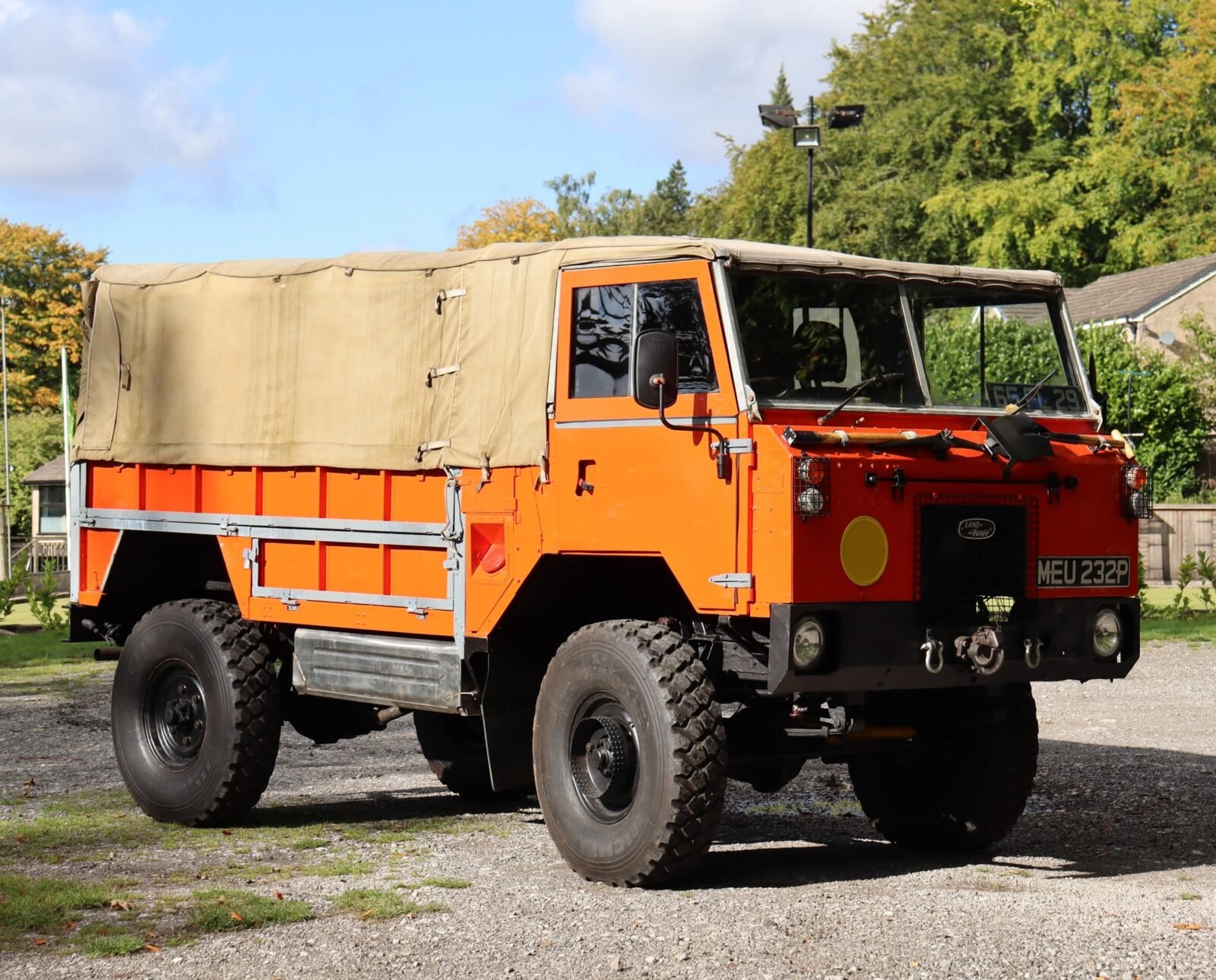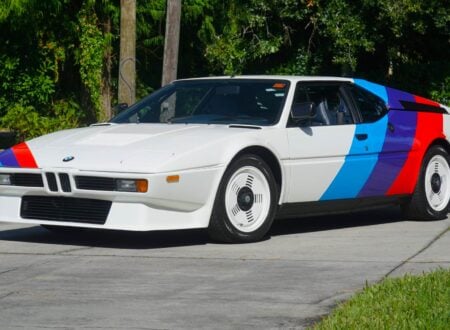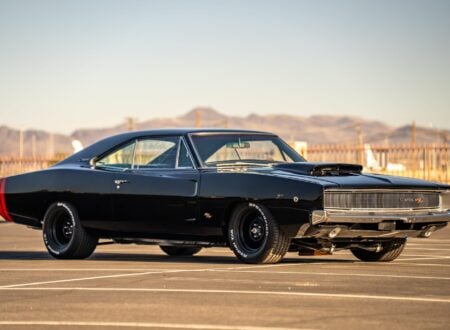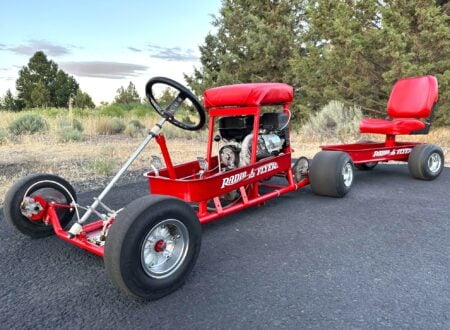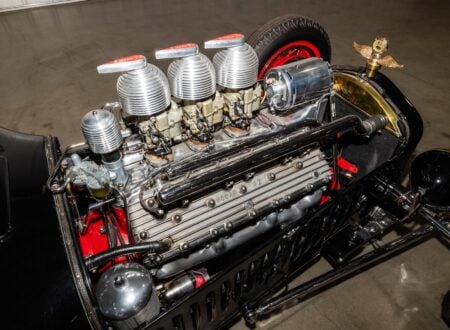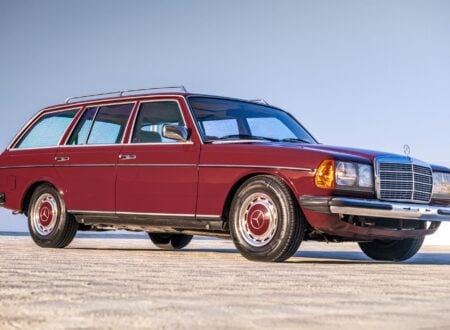This is a 1976 Land Rover 101 Forward Control, a vehicle built for towing British Army artillery in the 1970s. This specific example has been upgraded with a 3.9 liter V8 and an overdrive unit, making it more highway capable.
Only a little under 3,000 of these were ever made, almost all for British Military use, and today they have all been sold into private or museum ownership. They’re loved by their owners for their excellent off-road ability and interior space, and many have been converted into campers for overlanding.
Fast Facts: The 101 Forward Control
- The Land Rover 101 Forward Control was created in the late 1960s to meet British Army requirements for a compact artillery tractor capable of towing the L118 105 mm Light Gun, transporting its crew, and carrying ammunition. Built between 1972 and 1978, just 2,669 were delivered, almost exclusively for military use.
- Its design was unique among Land Rovers, with a forward-control cab, coil-sprung suspension, permanent four-wheel drive, and a heavy duty chassis. Power came from a 3.5 liter Rover V8 paired with the LT95 gearbox and integral transfer case, giving it solid towing capacity but limited top speed and fuel efficiency.
- The 101 served in several roles including General Service, Gun Tractor, and Radio Communication Vehicle, with rare variants like ambulances and recovery trucks. While stable as a convoy machine, drivers often complained about heavy steering and a tall driving position. NATO allies tested the model but few adopted it, leaving it primarily a British vehicle.
- Phased out in the 1980s, most 101s were sold through military auctions and repurposed by private owners. Many became camper or expedition vehicles thanks to their spacious interior and V8 power. The example shown here is ex-British Army and was demobilized in 1997, it was upgraded with a 3.9 liter EFI Rover V8, an LPG conversion, Fairey overdrive, and larger tires, with a current auction estimate of £20,000 to £24,000.
History Speedrun: The Land Rover 101 Forward Control
By the late 1960s the British Army needed a new light artillery tractor to replace its ageing fleet of Austin Champs and Series Land Rovers. The primary role was simple on paper – it needed to tow the new L118 105 mm Light Gun, carry its crew of six, and haul ammunition.
Above Video: This episode of TirsbaekTV covers the Land Rover 101 Forward Control and discusses its history, specifications, and shows it being driven around.
In practice, the specification required relatively compact dimensions, stability when towing, and the ability to fit into a standard RAF transport aircraft. Land Rover’s answer was the 101 Forward Control, a purpose-built military vehicle that became one of the company’s most unusual designs from the era.
Work on the 101 began in 1967, with the Ministry of Defence outlining a series of stringent requirements. The vehicle needed to carry a 1 ton payload, hence the official designation “Truck, Utility, 1 Ton, 4×4.” Land Rover engineers adopted a forward-control layout – driver and passenger seated above the front axle – to maximize cargo space within the 12-foot overall length dictated by RAF transport rules.
The design was all new, sharing little with civilian Land Rovers. A heavy box-section chassis, coil-sprung suspension front and back, and permanent four-wheel drive were chosen for off-road ability, with fuel economy being considered a much lower concern. To meet power and towing demands, Land Rover installed the 3.5 liter aluminum Rover V8, producing around 135 bhp, coupled with a 4-speed LT95 gearbox with an integral transfer case.
The 101 had a wheelbase of 101 inches, giving it the name by which it is commonly known. Curb weight was approximately 5,300 lbs, and payload capacity a full ton. Its permanent four-wheel-drive system used selectable high and low ratios, with center differential lock for difficult, slippery conditions. With a towing capacity over 4,000 lbs, it was well suited for its artillery tractor role.
The top speed was around 60 to 70 mph which was adequate for convoy use, but stability at speed, especially when unladen, was sometimes criticized. Fuel economy was predictably poor, often dipping into single digit MPG, but the emphasis was always on utility rather than efficiency. Besides, Her Majesty’s government would be picking up the fuel bills.
The British Army was the primary operator, taking delivery of 2,669 examples between 1972 and 1978. The bulk were produced as General Service models and Gun Tractors, with others built as Radio Communication Vehicles with box-body enclosures. A smaller number were converted to Ambulances or used as recovery and command variants – though these are exceedingly rare.
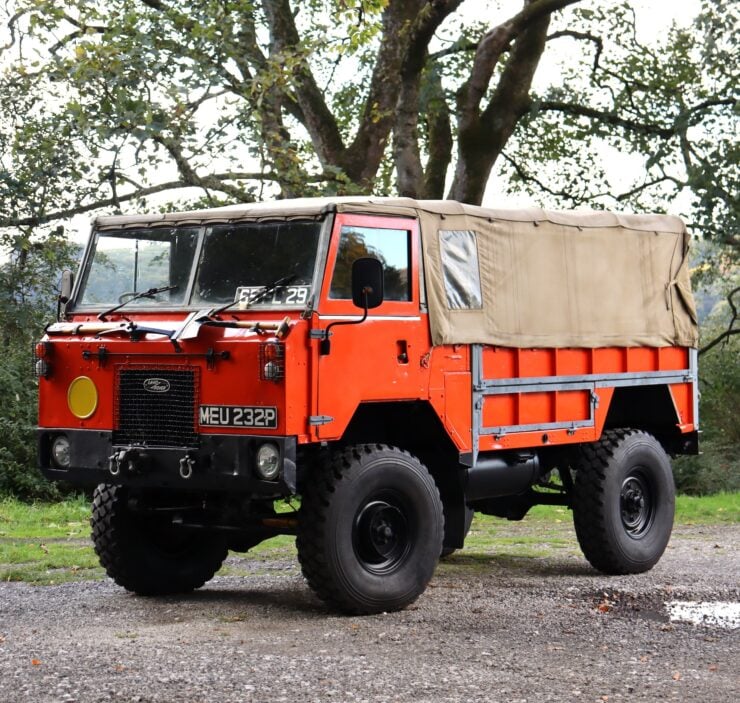

Beyond the UK, the Australian Army trialed a number of examples but ultimately chose not to adopt the 101. Some were supplied to other NATO partners on a limited basis, though it remained overwhelmingly a British vehicle. In service, it performed reliably as a gun tractor, though drivers often noted heavy steering and a high driving position that made it a handful in tight spaces.
By the late 1980s, the 101 was being phased out in favor of more modern trucks, particularly the Pinzgauer and later MAN Support Vehicles. Surplus examples were sold off through military auctions, where they quickly found favor among collectors, overlanders, and off-road enthusiasts.
In civilian hands, the 101’s combination of space, highway speeds thanks to V8 power, coil sprung suspension, and its unique looks made it popular for camper conversions and expedition rigs. Some have been re-bodied as overlanders with custom boxes, while others are preserved in original military specification by dedicated clubs, including the Ex-Military Land Rover Association in the UK.
The 1976 Land Rover 101 Forward Control Shown Here
The 1976 Land Rover 101 Forward Control you see here was originally used by the British Military, it was painted in Army/N.A.T.O. Green with registration “65 FL 29” and used by the 1st Battalion, Royal Irish Regiment.
After a time it was sent to the 1st Battalion, Duke of Edinburgh’s Royal Regiment, and later served with the Infantry Demonstration Battalion, Royal Welsh Fusiliers. It was demobilized in 1997 and sold into private ownership, where it has remained ever since.
Since it entered private hands, the vehicle has been given a series of upgrades including a 3.9 liter EFI Rover V8 that can run on both petrol and LPG – offering better fuel efficiency than the original carbureted 3.5 liter V8 despite the slight displacement bump.
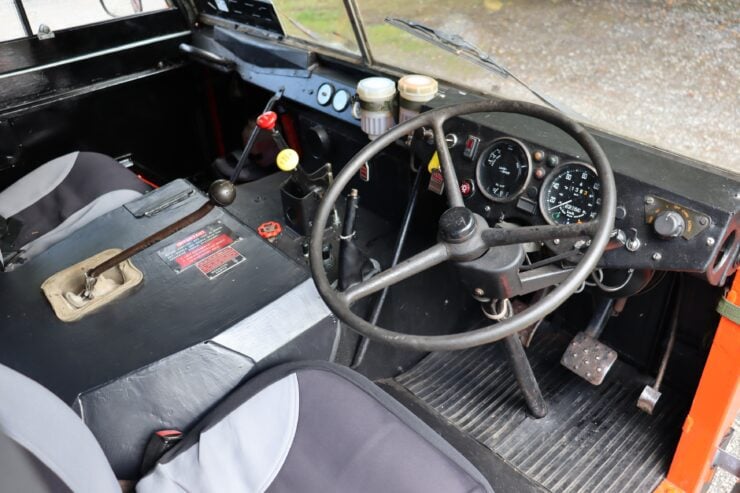

It now also has a Fairey overdrive, a steering dampener, and larger tires. That Fairey overdrive unit allows it to run much lower revs at highway speeds – further reducing the frequency of stops at your local petrol station.
It’s now due to roll across the auction block with H&H Auctions in mid-October with a price guide of £20,000 – £24,000, which works out to approximately $26,700 – $32,100 USD. If you’d like to read more about it or register to bid you can find the listing here.
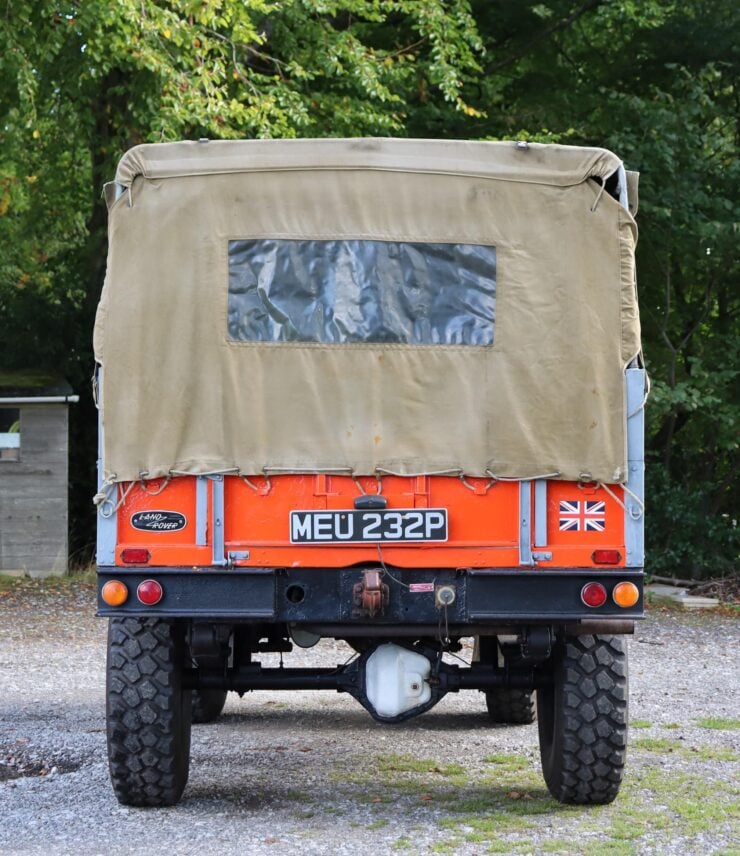
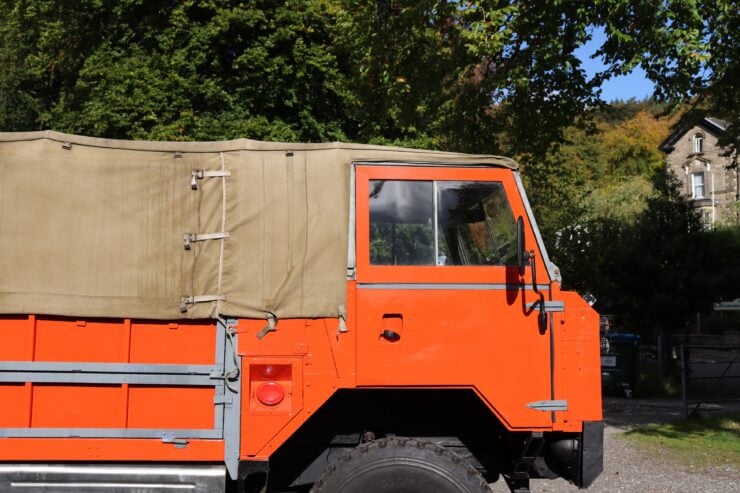
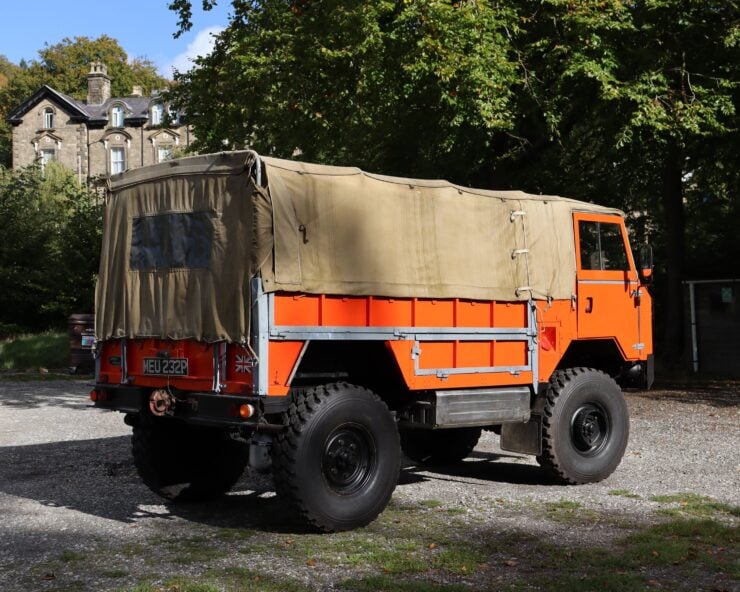
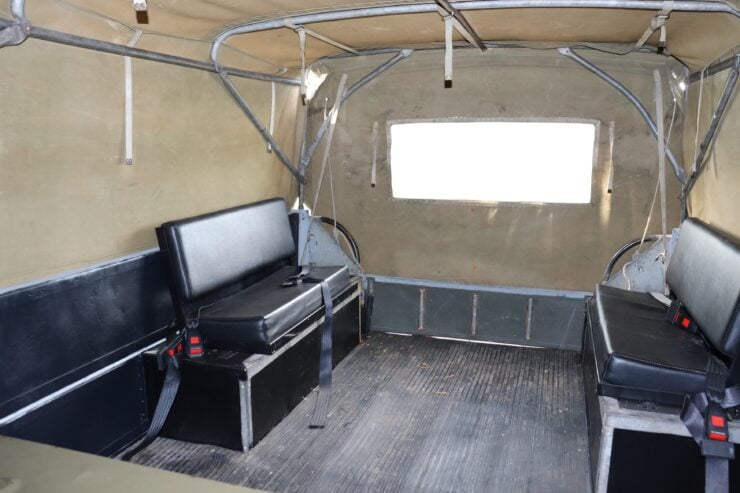
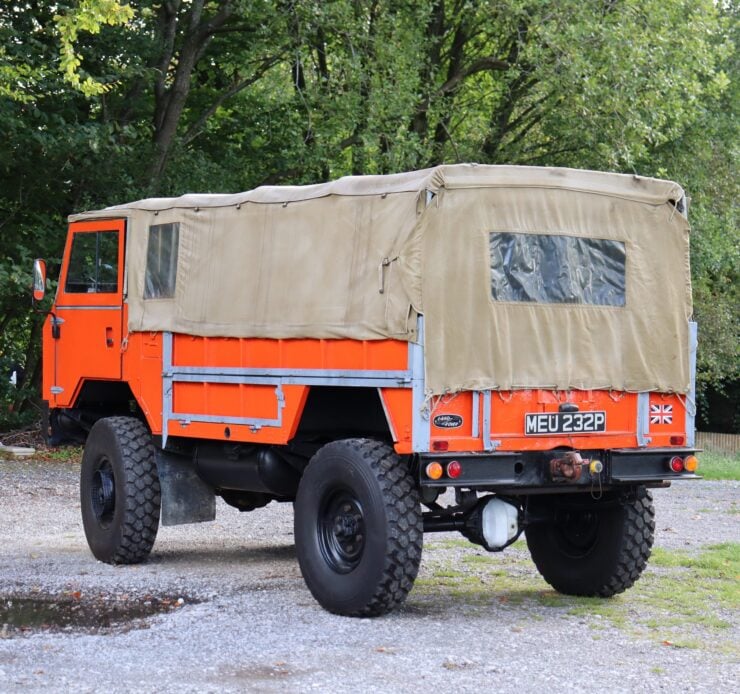
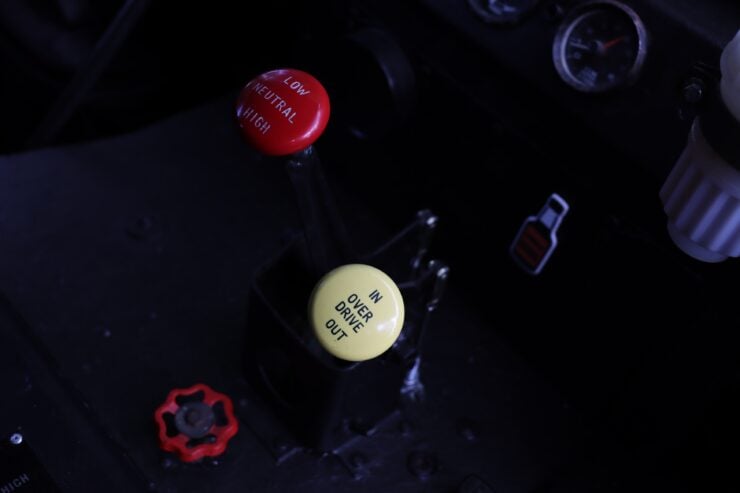
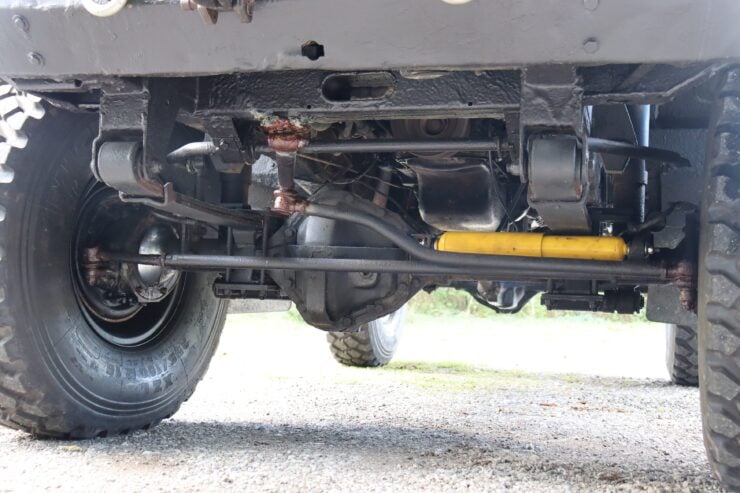
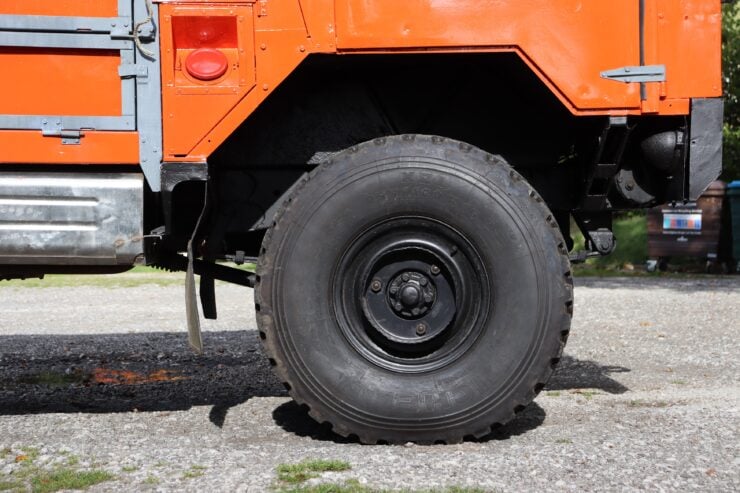
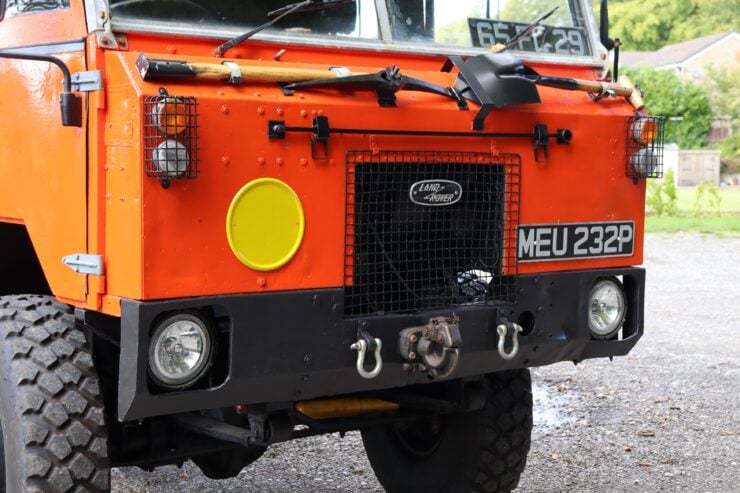
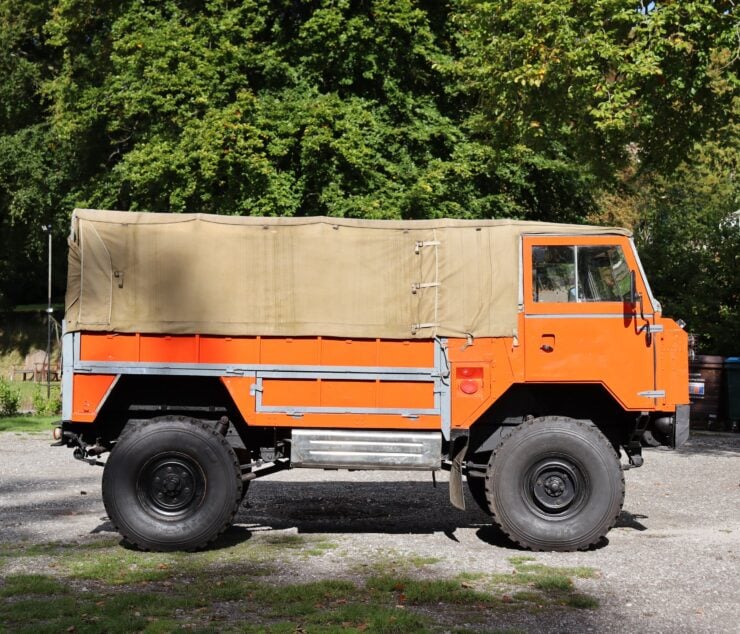
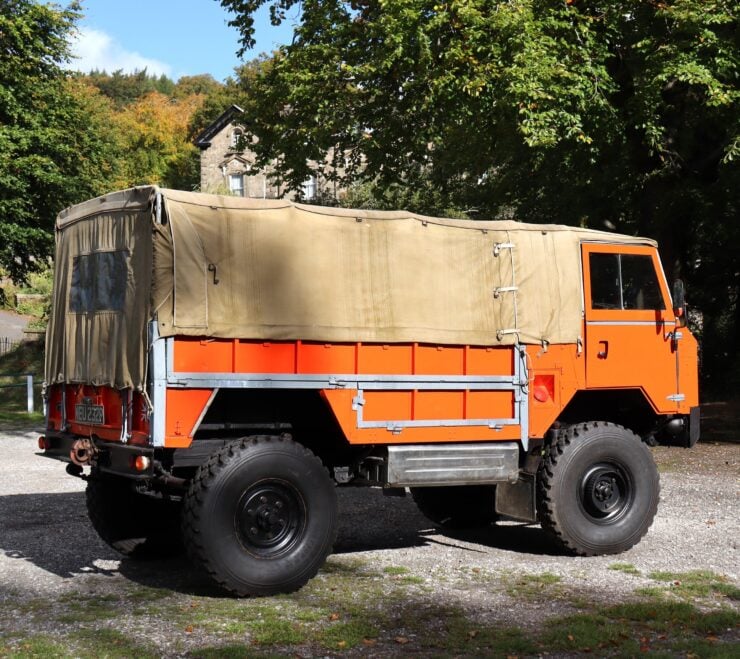
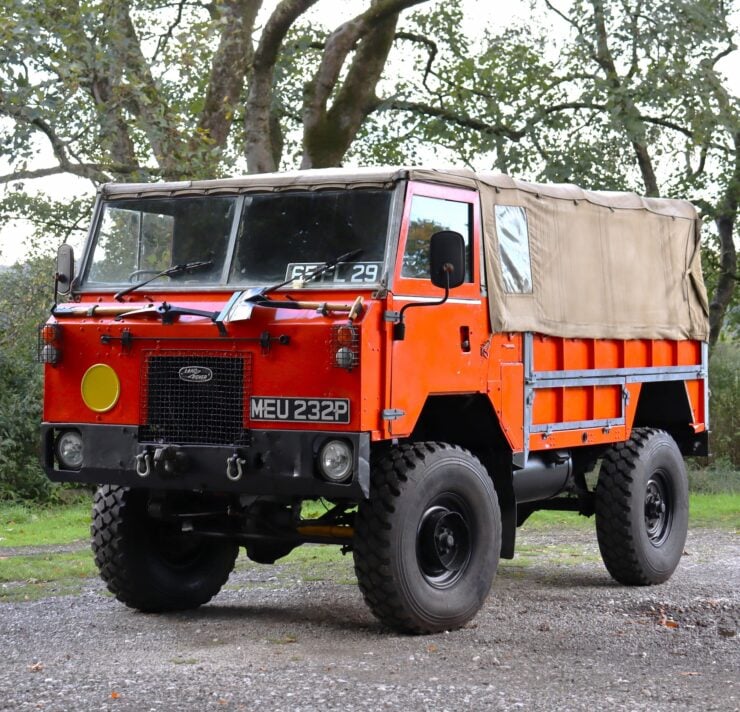
Images courtesy of H&H Auctions

